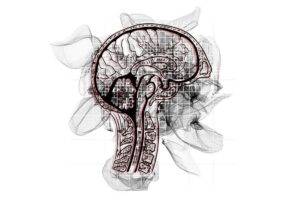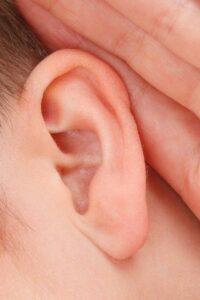Impact of Ear Injury on Hearing and Posture
Impact of Ear Injury on Hearing and Posture: The ear is a highly developed and sensitive organ important for hearing and keeping your balance. It has three separate parts: the outer ear, the middle ear, and the inner ear. Every part serves a unique function and is connected to the others through a complex system of interconnected structures and pathways.
This article discusses how a damaged ear in one ear can affect hearing in the other.
The portion of the ear that is visible includes the pinna, which is the fleshy area on the side of the head, as well as the ear canal. The ear acts as a funnel through which sound waves travel to reach the brain. Behind the eardrum is where you’ll find the middle ear, which is made up of the eustachian tube, three tiny bones (the malleus, incus, and stapes), and the eardrum itself.
The sound waves are amplified and sent on to be processed by the inner ear by the middle ear. The cochlea, which processes sound, and the vestibular system, located deep within the skull, are components of the inner ear. The cochlea is responsible for hearing.
Together, these parts make up the inner ear (which is responsible for balance).
It’s possible, for instance, that if the outer ear is damaged, sound waves won’t be able to reach the ear at all, which will result in a loss of hearing in both ears.
A similar injury to the middle ear can impede the ability of sound waves to be amplified and transmitted to the inner ear, which can lead to a decrease in hearing in both ears.
When the inner ear is injured, it can also cause symptoms in the other ear. A disruption in the inner ear, which is responsible for maintaining equilibrium, can result in vertigo and problems with balance.
These symptoms can manifest in one or both ears because the brain uses information received from both ears to keep its equilibrium in check.
A loss of sensorineural hearing may also result from damage to the middle ear or the cochlea. Because of this, it may be difficult for both ears to perceive high-pitch sounds.
Ear injury is another potential source of tinnitus, described as an ear ringing or buzzing sensation.
When there is no external noise, a person with tinnitus may hear ringing, buzzing, or other sounds.
Exposure to loud noises, ear infections, certain medications, and simply getting older are just a few of the causes of hearing loss.
Tinnitus can be temporary or last for a long time. It is usually not dangerous, but it can make a person’s life difficult and lower their quality of life. There is no cure for tinnitus.
But treatments like sound therapy, counselling, and cognitive behavioural therapy can help lessen how bad it is.
Meniere’s disease affects just one ear in the vast majority of instances; however, the condition can become more severe in both ears under certain conditions. In most cases, only one ear is afflicted.
Ménière’s disease/syndrome
Ménière’s is a long-term, progressive balance illness that affects inner ear balance and hearing. Acute vertigo (extreme dizziness), fluctuating tinnitus, growing deafness, and a sense of pressure in the ear are all symptoms.
Ménière’s disease affects whom?
The prevalence of Ménière’s syndrome in the general population is between 1:1000 and 1:2000, depending on the source. Ménière’s disease can afflict anyone at any age. A family history of the disease affects approximately 7-10% of individuals.
What causes Ménière’s disease?
Ménière’s disease has no recognized aetiology. Many variables are suspected of playing a role in the disease’s development, including increased fluid pressure in the endolymph sac, allergic substances that harm the inner ear, and other unknown reasons.
However, the relationship between these factors and illness development is still unknown.
What is the impact of Ménière’s disease on you?
Symptoms differ from one person to the next and with time. The main issues are intermittent bouts of dizziness accompanied by nausea and vomiting. The attacks might last anywhere from a few minutes and 24 hours.
Meniere’s illness is an unexpected and frustrating disorder since remission intervals between attacks can range from days to months or even years. The dizziness may lessen as the condition develops, but there may be periods of unbalance, which adds to the distress.
Tinnitus gets more prominent in the later stages, and there is fluctuating hearing loss. The organ of equilibrium is permanently destroyed, and substantial perturbations of equilibrium occur often. Typically, just one ear is damaged.
However, up to 50% of people may have both ears affected. It is helpful to separate the disease’s progression into three stages:
The first stage (early): is unpredictable vertigo bouts.
The predominant symptom is intermittent vertigo that can persist from a few minutes to many hours.
Ear fullness and tinnitus may precede vertigo bouts, but they frequently occur without warning.
There are periods of remission between episodes that vary from person to person, making Ménière’s disease an unpredictable and stressful sickness.
Second (middle) stage: vertigo, tinnitus, and hearing loss.
The vertigo attacks remain, but they may be milder. There may be a period of imbalance and motion-related vertigo after or before the attacks.
Permanent hearing loss develops, varying with the frequency of vertigo spells. Tinnitus becomes more noticeable and frequently varies or intensifies with the assaults.
Hearing loss, balance problems, and tinnitus are all symptoms of the third (late) stage.
Hearing loss worsens as the disease progresses, and vertigo bouts generally diminish or altogether. Hearing loss can be severe, with distortion, volume complaints, and behavioural issues.
The ear’s balance organ is permanently injured, and there are frequently substantial general balance issues, particularly in the dark.
What causes tinnitus in Ménière’s disease?
Ménière’s illness damages the inner ear’s hair cell receptors. These injured hair cells spontaneously fire and transmit erratic signals to the brain via the auditory nerve.
Because the hair cells responsible for low-frequency sounds are the first to be lost in Ménière’s disease, the tinnitus in Ménière’s disease is typically a buzzing, low-frequency sound.
In a poll of 51 patients with Ménière’s illness conducted in the United States, 49% indicated the tinnitus was moderate (tinnitus when listening to a loudspeaker) or very irritating (difficulty at work, in relationships and sleeping).
Tinnitus ch anges can be a warning indication for persons with early-stage Ménière’s disease that they are about to have a rough day or an attack.
anges can be a warning indication for persons with early-stage Ménière’s disease that they are about to have a rough day or an attack.
Why do persons with Ménière’s disease lose their hearing?
Ménière’s illness is hypothesized to be caused by increased pressure in the endolymphatic region. This rise in pressure is most likely responsible for symptoms such as ear fullness and decreased hearing.
The abrupt pressure drop is responsible for vertigo attacks. This accumulated damage causes hearing loss over time.
Kumagami et al. (1982) classify Ménière’s illness into three stages:
Stage 1: Between convulsions, hearing returns to normal levels.
Hearing fluctuates but does not return to normal levels in stage 2.
Hearing remains below 60 dB HL in Stage 3.
Average hearing performance is impacted by an increase in endolymphatic pressure in the cochlea. The primary effect of hearing loss is decreased sensitivity to mild noises.
Hearing loss mainly affects the low frequencies in the early stages of Ménière’s illness (stages 1 and 2).
Because increased pressure affects the fine-tuning of the basilar membrane and outer hair cells, sounds may look distorted.
These effects are initially reversible between attacks, but the inner and outer hair cells become permanently destroyed over time, culminating in irreversible hearing loss. This frequently results in a lower tolerance for loud sounds.
Many advantages of hearing in both ears are gone when one ear has a hearing loss of more than 20 dB HL.
This causes hearing impairments in complex listening settings, such as noise, group talks, listening from a distance, or in a reverberant environment.
This can result in severe disability and impairment. Localization difficulties can jeopardize safety.
End-stage (stage 3) Ménière’s disease can cause severe to profound hearing loss in certain persons.
Bilateral Ménière’s disease affects 17% to 50% of the population and can result in significant bilateral sensorineural hearing loss.
Damage to the inner ear can cause various symptoms, including vertigo, balance problems, tinnitus, and sensorineural hearing loss. If you believe that you have sustained an injury to your ear, you should seek the diagnosis and treatment of an audiologist or an ENT specialist as soon as possible.
It is essential to understand that a damaged ear could be a symptom of a more serious underlying condition, such as a brain tumour or a stroke. Consequently, you should get medical help as soon as possible if you have a sudden loss of hearing or other symptoms.
In conclusion, a damaged ear might significantly influence the other ear, resulting in many symptoms. Taking care of your hearing and getting professional assistance if you notice any changes is essential.
This requires getting your hearing checked regularly, avoiding exposure to loud noises, and getting ear infections treated as quickly as possible.
Brought To You By – Ear Wax Removal Swindon
The post Impact of Ear Injury on Hearing and Posture appeared first on https://gqcentral.co.uk







